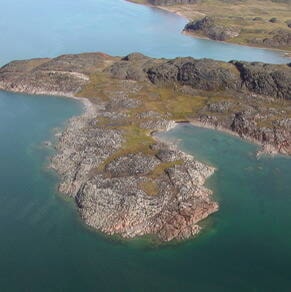West Kitikmeot Gold Corporation (WKG) announced on Nov. 24 its intention to move forward with what was previously the Kitikmeot Inuit Association’s Grays Bay Road and Port project (GBRP).
The initiative had already received an investment of $21.6 million from the federal government, another stakeholder in this triumvirate with WKG now at the helm.
The company’s board of directors includes Leona Aglukkaq and David Omilgoitok, who serves as co-chair.
“WKG was founded on the basis that the Kitikmeot is home to many mineral deposits that would already be mines in southern Canada, but have not been developed due to a combination of a lack of infrastructure, and a lack of social licence,” said Elliot Holland, chief operating officer of WKG in a statement to NNSL Media. “We have aligned our corporate mission with our shareholder and landowner: to build an Inuit-owned and led resources company, developing the Kitikmeot for the benefit of the Kitikmeot Inuit. We believe that developing Grays Bay Road and Port aligns perfectly with this mission, and we have received strong support from the Kitikmeot Inuit Association to take on this responsibility.”
The first objective, according to WKG CEO Brendan Bell, is to sit down with all future users and stakeholders to get the project ready for shovel-ready status. The development of a design and scoping exercise, with a “view of releasing a project design” to the Nunavut Impact Review Board (NIRB) sometime in 2024 is key to getting shovels in the ground and the project into the construction phase, he said. Bell estimates construction, or phase two of this project, to commence three or four years later, once the design and permit phase is completed.
“We want to go to NIRB with designs leading to approval. This is a restart — indeed why [WKG] got involved in the first place. Covid basically ground the project to a halt. This report was done last time around, but we want to make sure it still makes sense, and we need to understand all the factors involved and build the right design.”
Working with engineering firms Stantec Nunami and Jacobs Engineering, as well as Nuna Construction and PWC Canada on the permit front, WKG also intends to engage at all stages with the Inuit community.
Bell described past projects that have resulted in “great partnerships with Indigenous groups… I think it’s the right approach and will lead to a much better alignment of Indigenous interests. That’s our perspective.
“Indigenous ownership can be a difficult hurdle, in terms of participating in the upside without risking huge amounts of capital, but I think we’re making progress. This has been the dream that companies doing the extracting could be Indigenous-owned,” Bell continued. “It also has a fascinating broader story about how we develop the North with Indigenous interests. I think there’s a sea change coming about how we develop the North and our strengths… while being careful to protect capital that would be owned as birth-right inheritance for many generations to come.”
The Kitikmeot Inuit Association was contacted for comment but did not respond by press deadline.
